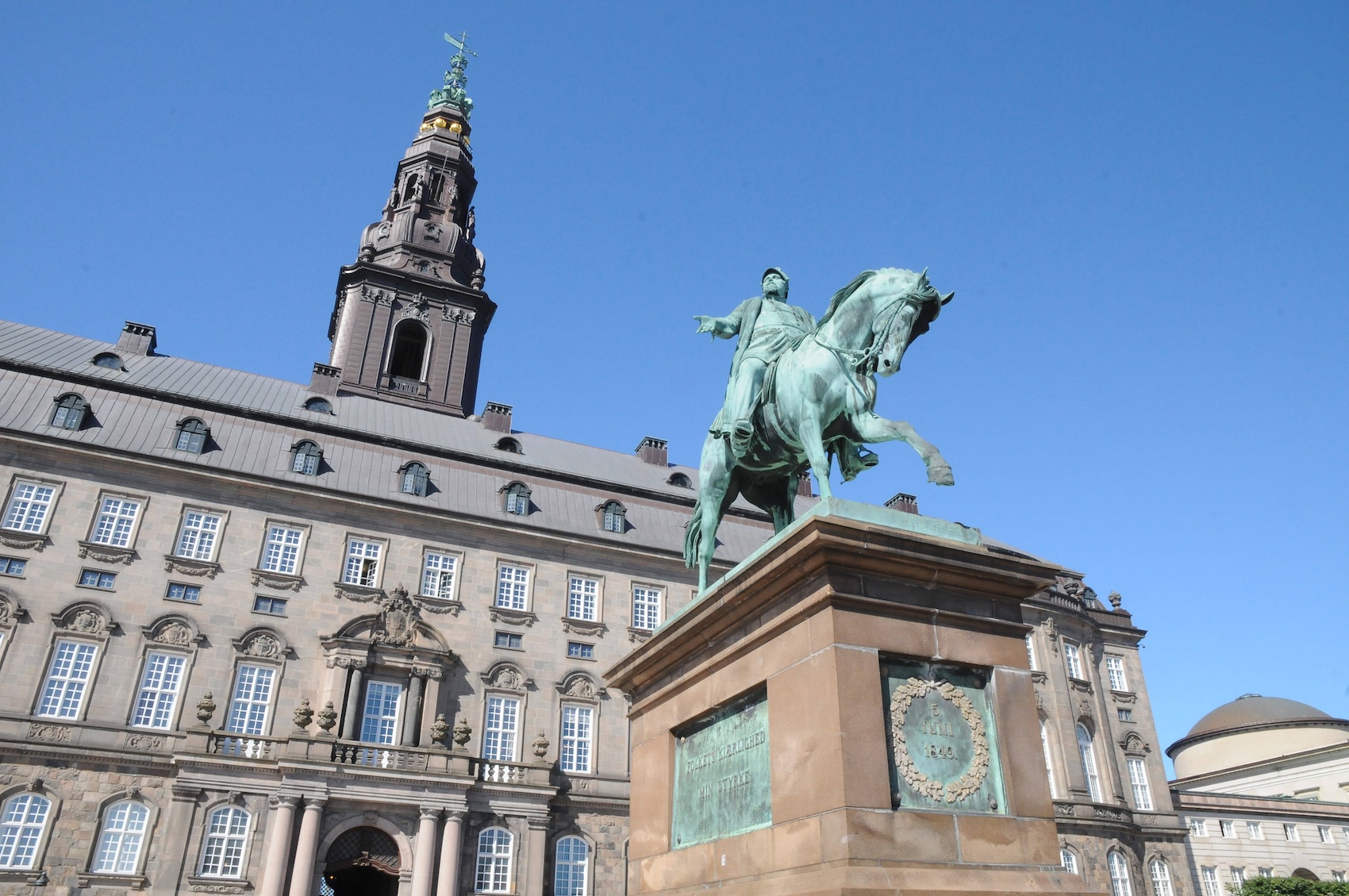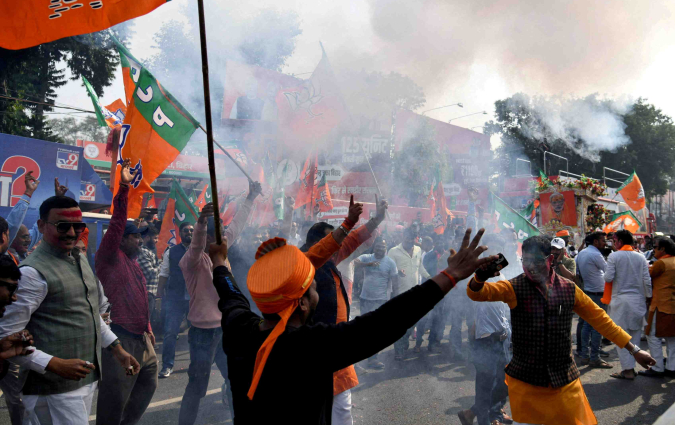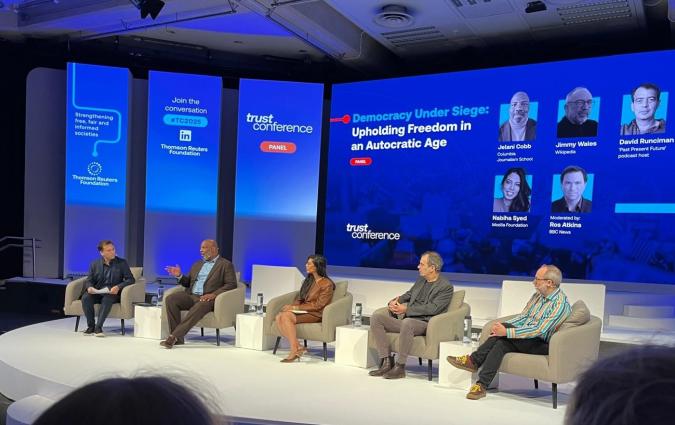From taxes to news: How Denmark is rethinking public funding for private publishers

A picture of the building of the Danish parliament. | IMAGO / Reuters
What should be distributed to who, how, on what basis, why, and so what? These are the six basic questions that must be answered if news is to receive public subsidies.
In many places, that seems like a distant prospect, perhaps even undesirable. Distant, because there is neither political nor popular support for the idea. Undesirable, because state support is frequently used as a tool for media capture.
But in my native Denmark, public subsidies for news media are already a reality, in a country that routinely is near the top of media freedom rankings.
A country with a population of 6 million provides about DKK 500m (around $80 million) in direct cash subsidies for private news media every year. On top of that comes almost as much in indirect subsidies through VAT exemptions, as well as significant investment in both the main public service provider DR and a network of regional public service providers.
In total, Denmark spends about 0.2% of its GDP on supporting the media through direct subsidies, indirect subsidies, and investment in public service.
That is twice the figure called for in the “A New Deal for Journalism?”, a report published by the Forum for Information and Democracy, and is one of the highest levels of support worldwide.
Relative to GDP, a similar level of support in the United States would amount to about $60 billion a year (until this summer, the Corporation for Public Broadcasting received just about $500 million a year from the federal government.) In the United Kingdom, it would be about £7 billion a year (the BBC receives about half of that in licence fee income, with VAT exemption for publications including the news media on top of this).
Advocacy campaigns understandably tend to focus on the ‘what’, making the case for public funding for news media. But securing the money does not in itself answer the question of how to put it to use. And this is not a simple task. As both academics and consultancy reports have shown, existing systems are rife with problems ranging from propping up incumbents at the expense of new entrants, to being ineffective and unpredictable, to having opaque distribution mechanisms that raise concerns about the risk of undue political influence.
So how could one design a system of direct media subsidies? For the last year, I have chaired a commission tasked by the Danish government to develop exactly that. We have just published our report (in Danish here). We were tasked with producing a starting point for the political process ahead – the report is our answer. The what was given as we were explicitly asked to work from the current level of funding support. The rest – who, how, on what basis, why, and so what – was up to us.
Below, I will outline how we answered these basic questions, in the hope that our work can be an inspiration for others considering models supporting news through public subsidies, though many of the principles could be repurposed for philanthropic or private support). What I write here is based on the commission’s work, but it is entirely my responsibility.
1. Who should receive support?
First, who should receive support? In advocacy work, it suffices to say “public interest media”, as a group of prominent economists do in a recent statement on the issue. But, as they note with careful attention to detail, their statement makes no attempt to define public interest media. This stirring term works for campaign purposes, as does its cousin “quality journalism” – few would argue for public funding for “private gain media” or “crap journalism” – but both are too vague to work for policy. If actual money is to be distributed to actual media, we need something a little more workable.
In the commission, we propose eight criteria that, in combination, defines whether an individual news media title qualifies for support:
- Clear editorial identity and responsibility: qualifying media need to have an identifiable title and a named legally responsible editor-in-chief accountable under Danish law.
- Independence: qualifying media need to be independent from undue commercial or political influence so cannot be owned by public authorities, politicians or political parties, or interest groups.
- Editorial resources: qualifying media need to have at least two full-time-equivalent editorial employees (with some flexibility for some of this to come from freelancers and/or volunteers).
- Public: qualifying media need to be clearly and explicitly aimed at a Danish target audience (addressed in any language) and be broadly accessible (so not limited to, for example, members of one association or employees at one company).
- Current affairs coverage: qualifying media need to cover current affairs of public significance.
- Frequency: qualifying media need to publish frequently, at least 40 times in the course of a calendar year.
- Availability: qualifying media need to be available for anyone (potentially against payment), and cannot be limited to certain parts of the public.
- News publishing: qualifying media need to have news publishing as their primary purpose, they cannot be promotional loss-leaders, stakeholder media representing specific interests, or primarily focused on topics such as entertainment, opinion material, product reviews or sports.
It is worth highlighting both what these criteria do and what they do not do.
First, they do not introduce any new legal obligations or forms of additional political or regulatory oversight or scrutiny, which some would regard as an attempt to introduce licensing of news publishers by the back door. Instead, they offer a way of identifying the subset of news media titles that can qualify for support – nothing more, nothing less.
Second, in combination, the criteria provide a way of identifying news media in a way that is not tied to any qualitative assessment of specific pieces of content or tied to any specific formats or forms of distribution. No one gets to decide whether a given title is “public interest” or what they produce “quality”. They are thus deliberately both content- and platform-neutral, while providing a basis for drawing a line between publishers broadly and news media specifically.
Third, in part as a consequence, they provide the basis for distributing general subsidies, not targeted subsidies earmarked for specific purposes or specific media. The latter approach is entirely appropriate for private philanthropy. But, in the commissions’ view, it’s not suitable for public subsidies.
A foundation can pick winners on the basis of its own values and priorities and support them from private sources. But if the state does the same with public funds, we risk the appearance (or even worse, the reality) of politicians picking winners on the basis of their own ad hoc, parochial, or self-interested reasons.
It is important to be clear about the implication of this. Some might think that outlets they personally respect are the ones that deserve support – whether that is the New York Times and the Guardian or the New York Post and the Daily Mail. Under these criteria, all four would almost certainly qualify.
Most of the eight criteria are objective – editorial identity and responsibility, independence, editorial resources, frequency. Others involve an element of judgement. They are meant to be applied together and in a Danish context by a body called the Media Board, an arms-length independent organ appointed to make decisions about access to media support in a way that is separate from both the government of the day and of parliament.
2. How should support be distributed?
Here our answer is simple: money. Instead of tying support to specific kinds of content, specific types of journalism, particular kinds of distribution, or to “digital transformation” or innovation, or providing it through government advertising, legal notices, or other indirect means, we propose that the bulk of the support is distributed as cash subsidies to qualifying news media.
There are three main reasons for this:
- News media and the journalists who work there have a clearer idea than we in the commission – or policymakers – of where that money might be invested in a way that connects with the public. Especially in a constantly evolving competitive media environment, attempts at micro-managing risks turning into counterproductive and ineffective backseat driving.
- Any kind of public support is highly fungible. As development economists have long pointed out, you can try to earmark support you provide in all sorts of ways, but recipients will generally (and understandably) just reallocate other resources around to ensure that their overall spending reflects their priorities, not the donor’s.
- Cash subsidies can be disclosed down to the last cent in a fully transparent fashion. Members of the public can see exactly who qualifies for support provided in their name and how much each receives.
3. On what basis are subsidies provided?
Our proposal is that subsidies are tied to what each qualifying news media invests in editorial work. Applicants submit audited figures for their investment, and the starting point for calculating their share of the total subsidies is their share of the total editorial investment of all qualified applicants. If you are a small title that accounts for 0.1% of investment, the starting point is that you’ll get 0.1% of the subsidies. If you are a big title that accounts for 5%, though, you will get much more.
Investment in editorial is, however, just the starting point. There are three further steps involved.
First, to avoid that the subsidies end up simply reinforcing pronounced winner-takes-most dynamics in the marketplace, dynamics that generally benefit a few upmarket national titles, we propose prioritizing local/regional titles and free-standing independent titles by weighing the investment reported by these titles by a factor of 1.5.
Local/regional titles are privileged to counter the risk of news deserts and to contribute to greater geographic diversity in news. Independent titles are privileged to support the diversity of provision at a national level in a context where individual news brands do not benefit from the economies of scale enjoyed by larger media groups. So if our small title above is either a local title or an independent title, it now stands to get a larger share of the subsidies than its 0.1% share of editorial investment alone would result in.
Second, to ensure that the subsidies aren’t hoovered up by the biggest titles, we propose an absolute cap on how much any single news media title can receive, which we propose to put at DKK 12.5 million (about $2 million), though rising to 18,75 million for local/regional titles and independent titles.
Our estimate is that more than 150 news media will qualify for support. The five biggest of them – all national titles, all owned by larger media groups, several of them very profitable – combined probably accounts for about one-third of total editorial investment from qualified applicants. If there was no cap, they would receive a similar share of the subsidy. Instead, with the cap, the big title in our example above, which accounts for 5% of total editorial investment, might get about 2% of the total subsidies (a bit more if it is a local/regional title or an independent title).
Third, to ensure that no news media appear to be (or in fact becomes) dependent on public subsidies that could in principle be revoked at a moment’s notice by a new political majority (as Trump has recently demonstrated with public media in the United States), we propose that no news media title should be able to receive more than 35% of its editorial investment in subsidies.
If the above comes across as complicated, try to have a look at the intricacies of digital advertising or dynamic paywalls. I promise you this is simple by comparison.
Importantly, the model is designed to distribute all allocated funding. Every year, some titles will increase their editorial investment, others will cut theirs. New titles will qualify, others will drop out, or close. The model is zero-sum, and simply redistributes the public funding allocated among all qualifying titles on the basis of the steps outlined above.
4. Why should the news media receive subsidies?
This is a political decision for citizens and their elected representatives, but the commission’s view is that these direct media subsidies are a form of democracy support, an investment in a crucial part of the infrastructure that enables popular government.
There is broad-based political support for this view in Denmark, and it is a view that is well-documented by research which shows that, while certainly not without shortcomings and problems, news media demonstrably contribute to a more informed, resilient, and engage public.
Direct support for news media is not the only way to support this role: keep in mind that Denmark spends about five times as much on public service media as on direct and indirect subsidies for private news media.
But direct subsidies are an important way to support the news media. And in a country with strong and comparatively well funded public service media, it is a way to enhance diversity and competition in the media environment.
5. So what? What impact can we expect?
The first-order consequences are hopefully clear. Direct public subsidies for news media’s editorial investment incentivise and support this investment, and help generate a greater spending in professional news journalism than what the market alone would provide.
Shelves of research documents the public value of this work. Importantly, the Danish model maintains a direct link between editorial investment and money received. If a media group guts their newsrooms or closes a dozen titles despite having secured support from politicians, their share of the public subsidies will decline sharply, and the money instead go to other qualifying recipients.
Furthermore, the model for distributing subsidies that the commission proposes uses three levers: weighing of investment by local/regional and independent titles, an absolute cap for how much an individual title can receive, and a general cap on support.
Our goal is to design a system that, without requiring any ad hoc qualitative decisions by either politicians or civil servants – decisions that may come across as playing favourites or rewarding particular titles on an idiosyncratic (or worse) basis – allocates the support in a mechanical fashion. As outlined, it does so in a way that does not punish commercial success, but avoids simply showering big titles with public money and ensures extra support for titles that are especially important for the diversity of provision at both the local and the national level.
In the Danish context, we are confident this kind of model can operate with a strong arms’ length principle that protects independent news media from the appearance or reality of undue political influence.
With the total level of money committed, we estimate the scheme will fund between roughly 10% (at big titles hitting the absolute cap) and about 30% (at local/regional titles and smaller independent titles) of editorial investment. (This, in turn, is then a significantly smaller share of the total operating costs of the news publishers in question.)
The second-order consequences are necessarily harder to predict. Some we have tried to anticipate and pre-empt, including, as stressed above, the risk that direct public subsidies simply reinforce winner-takes-most dynamics in the marketplace and end up primarily benefiting the owners (and readers) of a few big national brands. Others require wonkish tweaks which would be too long to explain here.
By steering clear of models tied to quantitative measures of content or reach, or models tied to specific business models (whether ad-supported or reader-revenue based), we hope our proposed model avoids the unintended effects of past models, which risked rewarding media groups for sticking to formats and forms of distribution that are demonstrably losing relevance with much of the public, and instead focus on incentivising investment in editorial at the level where it primarily meets the public – through individual titles.
Can this model be used elsewhere?
Denmark is an unusually privileged country in many ways, also when it comes to news media. It has high levels of media freedom, a diverse, competitive, and in many cases innovative private news media industry coexisting with strong public service media, energetic and enthusiastic journalists, and a long tradition of broad-based political and public support for media policy to support both private and public media.
These pieces are, to put it mildly, not in place in most countries, nor are specific preexisting administrative features (the Media Board) and legal features (the role as a legally responsible editor) that the model relies on. But even if they were in place, the questions of how one might design direct support measures for news media – what should be distributed to who, how, on what basis, why, and so what? – need clear and workable answers if citizens and their elected officials are to consider providing such support with money that could be spent on any number of other pressing priorities from the climate emergency to national security to welfare.
Our task in the commission was to offer models for how this could be done in Denmark in the future. I hope our approach can be an inspiration elsewhere as well.
In my experience, the hard part is not convincing journalists, journalism researchers, and people who talk about journalism at conferences that public support could help going forward. It is convincing citizens, elected officials, civil servants, and other policymakers, and outlining how it can be done in a way that ensures a balance between defining who qualifies for support, devising an efficient way of distributing it, and implementing it without compromising editorial independence. That is what we have tried to offer a model for that we hope will be useful in Denmark, and hopefully elsewhere too.
In every email we send you'll find original reporting, evidence-based insights, online seminars and readings curated from 100s of sources - all in 5 minutes.
- Twice a week
- More than 20,000 people receive it
- Unsubscribe any time
signup block
In every email we send you'll find original reporting, evidence-based insights, online seminars and readings curated from 100s of sources - all in 5 minutes.
- Twice a week
- More than 20,000 people receive it
- Unsubscribe any time







